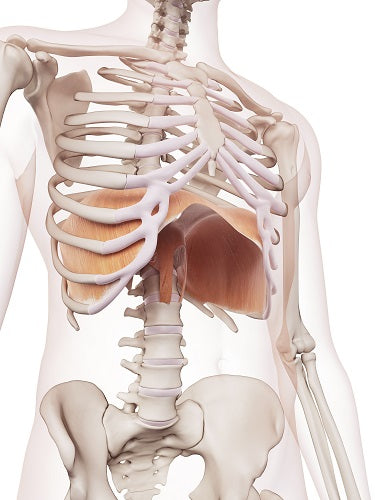
Muscle Anatomy
diaphragm
The diaphragm, a large, dome-shaped muscle, separates the thoracic and abdominal cavities, playing a pivotal role in respiration.
Origin:
Arising from multiple points, including the xiphoid process, costal cartilages of the lower ribs, and lumbar vertebrae, the diaphragm forms a musculotendinous structure.
Insertion:
Converging towards a central tendon, the muscle inserts into the central tendon, creating a strong anchor point.
Function:
As the primary muscle of respiration, the diaphragm contracts during inhalation, causing it to flatten and increase thoracic volume. This action lowers air pressure, facilitating air entry into the lungs. During exhalation, the diaphragm relaxes, allowing the thoracic cavity to decrease in size, expelling air from the lungs. Additionally, the diaphragm aids in other functions, such as assisting in core stability and influencing intra-abdominal pressure.
Diaphragm
Exercises
Most often the respiratory system, more specifically, the inspiratory and expiratory muscles, are not thought to be trainable except through aerobic type activities.
This, however, is only partially true. The respiratory system muscles can also be strengthened with specific strength training exercises.
Volume 12 - The Respiratory System of our Kinesiology of Exercise Ebooks is a first for a book on strength training for the respiratory system.
